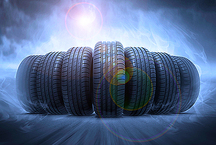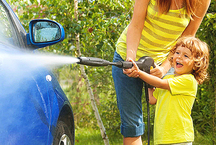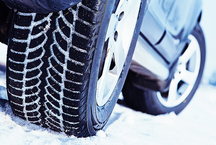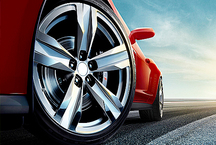9 of the quietest summer tires





Although noise is far from the most important characteristic of car tires (for example, racing slicks due to the lack of a tread pattern will be virtually silent, but how can we ride them after the rain?), Today we will focus on it. In high-quality summer tires, the possibilities are already quite capable of covering the needs of the standard mode of car operation. That is, during a real city driving cycle, advertising phrases like “XXX tires are 10% better than YYY tires” may well give a zero difference, but the acoustic characteristics of rubber ears will feel right away. Especially if your car at the factory is deprived of high-quality sound insulation - and the majority of such on our roads.
When compiling today's ranking of the best quiet summer tires, we relied not only on the absolute values of the noise of a particular rubber, but also on a certain average "noise / quality" ratio. If you take a tire with shallow and shallow tread grooves, it will, of course, be quiet, but after a rain, the deterioration of braking and handling will be more critical than comfort for the ears. The resource is also important - too fast washable tires are difficult to recommend.
| Category | A place | Name | Rating | Price |
|---|---|---|---|---|
| The quietest summer budget tires | 1 | Nokian Tires Nordman SX2 | 9.6 / 10 | 3 100 |
| 2 | Tigar High Performance | 9.5 / 10 | 3 357 | |
| 3 | Toyo Nano Energy 3 | 9.4 / 10 | 3 246 | |
| 4 | Triangle Group Sportex TSH11 / Sports TH201 | 9.2 / 10 | 4 600 | |
| The quietest summer tires of the middle class | 1 | Continental ContiPremiumContact 5 tires | 9.7 / 10 | 7 033 |
| 2 | Hankook Tire Ventus Prime3 K125 | 9.5 / 10 | 5 820 | |
| 3 | Nokian Tires Hakka Green 2 | 9.4 / 10 | 3 726 | |
| The quietest summer tires premium class | 1 | MICHELIN Primacy 4 | 9.8 / 10 | 9 273 |
| 2 | Toyo Proxes STIII | 9.5 / 10 | 12 529 |
The quietest summer budget tires
|
Nokian Tires Nordman SX2
3 100
The classic longitudinal-transverse tread design with narrow grooves with a soft rubber compound is, in general, the easiest recipe for low-noise tires for the budget segment. And the validity of this statement Nordman SX2 successfully confirms.
Another thing is that someone may find the tread too soft: in the heat, under heavy loads and speeds, tires will wear out too quickly. But by their combination of characteristics, they can be called one of the most balanced in their class - this also applies to noise and behavior on dry and wet surfaces. Make the manufacturer more rigid sidewalls, the comfort would obviously suffer, although it would appear "impenetrable" (however, supporters of a rigid sidewall somehow forget that the suspension and the body then get the blows). Main advantages:
Minuses:
|
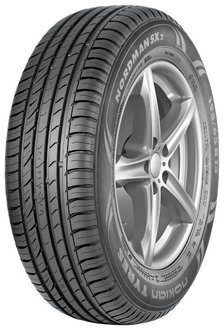 9.6 / 10
Rating
Reviews
Good cheap quiet summer tires, but I was quite happy. At the track at 110-120, it is quite comfortable, and I don’t require more. |
|
Tigar High Performance
3 357
The Tigar brand (which by its ear is perceived by something similar to the ever-memorable Abibas from the commodity markets) belongs not to a newly minted company - this Serbian company was founded back in 1935, and has been producing automobile tires since 1959. So with “tiger” “You guessed it, just in Serbian, this word is spelled that way.
At the moment, the company is wholly owned by Michelin, and this is definitely felt by the nature of the tires: soft sidewalls have always been firmly associated with French rubber. Although this requires some caution when storming the curbs, it gives a good plus to the comfort of movement, and it is a pleasure to take on and disassemble soft rubber. The tread pattern is quite conservative - two wide grooves in the center and curved lamellae, resembling the stripes on the skin of the very tiger. But this decision, clearly dictated by the designers, also works: of course, under a shower, Tigar High Performance tires do not provoke an aggressive ride, but on dry asphalt there are no problems with handling or acoustic comfort. Main advantages:
Minuses:
|
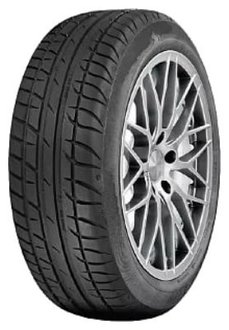 9.5 / 10
Rating
Reviews
Good noiseless summer tires, the price is favorable, and the quality is on par - Michelinists put the equipment to the Serbs, so the character of the tires is very familiar. |
|
Toyo Nano Energy 3
3 246
This series is designed for low-cost cars, which, in addition to price, is indicated by the choice of sizes: if the majority of series in the rating we took for comparison the diameter of 15 inches was “younger” (and sometimes we had to take 16 ”as the minimum), here the sizes start from 13 ”to 16” already ending.
The tread pattern also indicates the budget application - this is an absolutely traditional “asphalt” rubber, where resistance to aquaplaning is sacrificed to acoustics. To accelerate and “play checkers” on these tires is not worth it, their element is the traditional routes “home-work-Auchan”. Then their characteristics are quite satisfactory, and the noise level is not satisfactory. Main advantages:
Minuses:
|
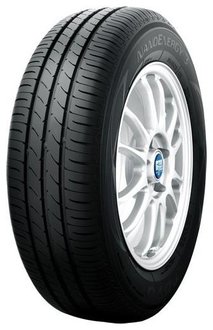 9.4 / 10
Rating
Reviews
The company is proven, so in the budget series the quality promises to be good. While driving on tires 5 thousand, quite comfortable and quiet. |
|
Triangle Group Sportex TSH11 / Sports TH201
4 600
The Chinese "triangles" at one time became popular among fans of drift with a limited budget - it was not expensive to burn them, and the car retained quite acceptable controllability. Well, considering such low prices, minor flaws could be forgiven.
With regard to the normal ride, these tires are really good - although they are “dubbed” quickly (which is not surprising for the budget brand), the tires turned out to be expectedly low noise due to the specific tread pattern. In combination with rigid sidewalls, it provides both a strong “holder” and resistance to breaking in maneuvers. For dry and hot summer - a great option for budget rubber. The keyword "dry." Alas, the same tread design provides a clear sensitivity of the Sportex tires to the sediments - not so critical as to exclude them from the rating, but the change in the clutch is still too big. In the rain it is worth being careful. Main advantages:
Minuses:
|
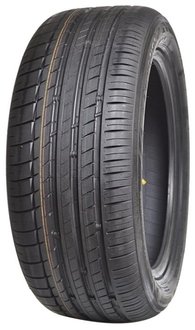 9.2 / 10
Rating
Reviews
Excellent quiet tires, if you like to imbibe the pedal - the resource at this price does not care. Still and quiet, which is also not bad. I have no noise insulation from the word “absolutely”. |
The quietest summer tires of the middle class
|
Continental ContiPremiumContact 5 tires
7 033
Repeated favorite of various tests and in the ranking of the best in silence summer tires is definitely worthy of the first place. The key to this is a soft tread with lamellas almost perpendicular to the axis of rotation, such a design with a small width of the grooves usually promises a minimum level of noise. Four longitudinal grooves at the same time provide a drainage rate, so that in rainy weather, the rubber behaves "five".
Even more than that — it seems that they were targeting it on wet surfaces, because she loses “to dry” to the same competitors, whom she confidently avoided on a wet road. But we’ll take into account that safety in the rain is still more important for rubber than a small gain on dry pavement, so ContiPremiumContact 5 is worthy of the first place. Of the minuses it is worth pointing out the soft sidewalls - the rubber is not very suitable for aggressive driving and broken roads. Main advantages:
Minuses:
|
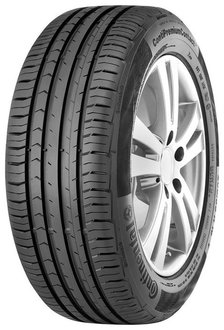 9.7 / 10
Rating
Reviews
Definitely the most silent soft summer tires in this class, if not fly headlong over the pits. |
|
Hankook Tire Ventus Prime3 K125
5 820
It is not entirely clear why Hankook needed the use of an asymmetric tread, if its smallest part is asymmetrical - thin grooves in the central zone of the tread. Tires left wear-resistant and well digested road hollows.However, it is worth considering that, going from a softer rubber, it will be possible to hear previously not posing a backlash in the suspension - the blows transmitted to the hubs and further along the chassis to the body will become stronger.
Transverse rigidity gives a plus to the handling, so you can consider these tires and as an option for lovers of riding “hotter”. But you should not forget that the middle part of the tread does not work best in water, the temperament after the rain will have to be tempered. These summer tires will be good for traveling - tougher than conventional low-noise tires, rubber reduces rolling resistance, and this potentially promises a reduction in fuel consumption. Noise is normal, handling on dry asphalt is normal, rubber is ready for “surprises” of covering - a great combination for a trip on weekends or for the whole vacation. Main advantages:
Minuses:
|
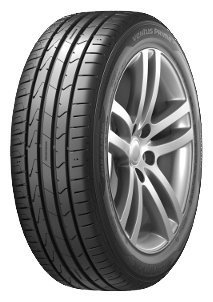 9.5 / 10
Rating
Reviews
The price is still acceptable, but the quality is already on the level. There are no hernias and cuts for two seasons, the balance does not go away. On the highway it is a pleasure to drive, it is quiet, it goes smoothly. |
|
Nokian Tires Hakka Green 2
3 726
Will the brightly asymmetrical summer tire tread demonstrate a low noise level? If you look closely, it becomes noticeable that the Finns have clearly worked on this. At the inner side, where the grooves of the tread have the greatest width and depth, they are located at a right angle to the direction of rotation. As the angle of inclination of the grooves towards the outer part of the wheel becomes sharper, their size simultaneously decreases.
Add to this the soft rubber compound, which additionally plays into the hands of acoustic comfort and improves grip. But you have to pay for it with a resource, like many other participants in the rating - soft protector will inevitably wear out faster. Main advantages:
Minuses:
|
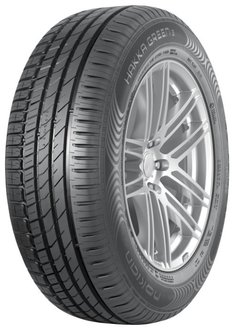 9.4 / 10
Rating
Reviews
Summer tires are soft and quiet, but not very suitable for high mileage - they grind quickly, they are more likely to travel around the city. |
The quietest summer tires premium class
|
MICHELIN Primacy 4
9 273
Primacy 4 is one of the best summer tires for different tests in terms of controllability and braking performance, but the noise level does not cause rejection. The tread pattern and the traditionally soft rubber play on it. And, as befits a tire of this class, Primacy 4 does not sacrifice softness - tires come out "long-lasting", and with a slight deterioration in performance as they wear.
As a result, the fourth generation Primacy was, in our opinion, one of the best examples of the balance of characteristics for passenger summer tires: providing the most important, the French do not forget about the "little things" like noise. This is especially noticeable at high speeds - if in the urban cycle Primacy 4 cannot be called the absolute champion in acoustic comfort, then as you accelerate, more and more competitors will start giving up in disgrace. Main advantages:
Minuses:
|
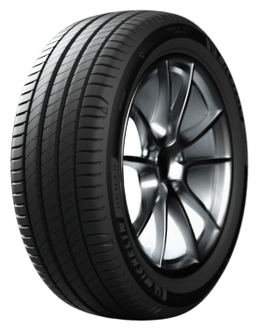 9.8 / 10
Rating
Reviews
Rubber on asphalt tenacious that dry in the rain. On the track it is not necessary to turn up the volume - the noise of the wheels does not strain at speed. |
|
Toyo Proxes STIII
12 529
Despite the tread design with pronounced inclined "drafts" in the central zone, which is not particularly conducive to comfort, Toyo managed to create pleasant and quiet summer tires. True, they clearly love the heat - when the tires are cold, these very checkered ones make themselves felt.
However, the “target audience” of Toyo Proxes STIII is, first of all, owners of powerful SUVs, who will definitely have no problems with warming up rubber.For them, the tread pattern and optimized - tires perfectly divert water on wet asphalt, allow departures on dirt roads, give good feedback on the brake pedal and steering wheel. Nevertheless, we note that the "purely asphalt" series will be quieter. A compromise was nevertheless inevitable here ... but, given the condition of our roads, it is possible to slightly concede in acoustics in favor of universality. Main advantages:
Minuses:
|
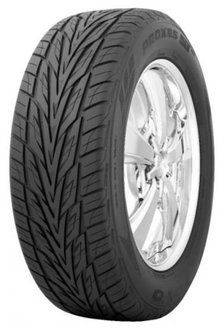 9.5 / 10
Rating
Reviews
I don’t move out of the asphalt often, so I didn’t put on an ateshka - these summer tires are definitely quieter, I also have enough of them for terrain. |
How to choose the quietest summer tires?
So, if we are talking about the most quiet summer tires, then we immediately rest on what this noise creates - the tread pattern. Ideally, tires should not have transverse grooves at all, but you are unlikely to agree to return to the 30s, when clinching tires with such a pattern could be seen on automobiles.
Therefore, while maintaining resistance to aquaplaning (and even no cross-flow will not interfere), a low-noise tire should ideally have the softest tread with “rectangular” cutting and wide longitudinal grooves. Such tires demonstrate the best level of acoustic comfort, but angular "checkers", although they are unequivocally advantageous in terms of water drainage rate and cross-country ability, will make more noise. Narrow, but deep grooves are preferable, while they should alternate with deeper ones - this way you will get the most optimal combination of noise and “fluidity”.
The more off-road tires are required, the more you have to sacrifice acoustics. Wide grooves directed at different angles will inevitably increase the noise level even on soft rubber grades. This is especially pronounced on Mud-Terrain tires with their aggressive tread. So, perhaps, if acoustic comfort on asphalt is so important, you should think about two different sets of wheels, and not one “universal” one?
Have a good shopping!
